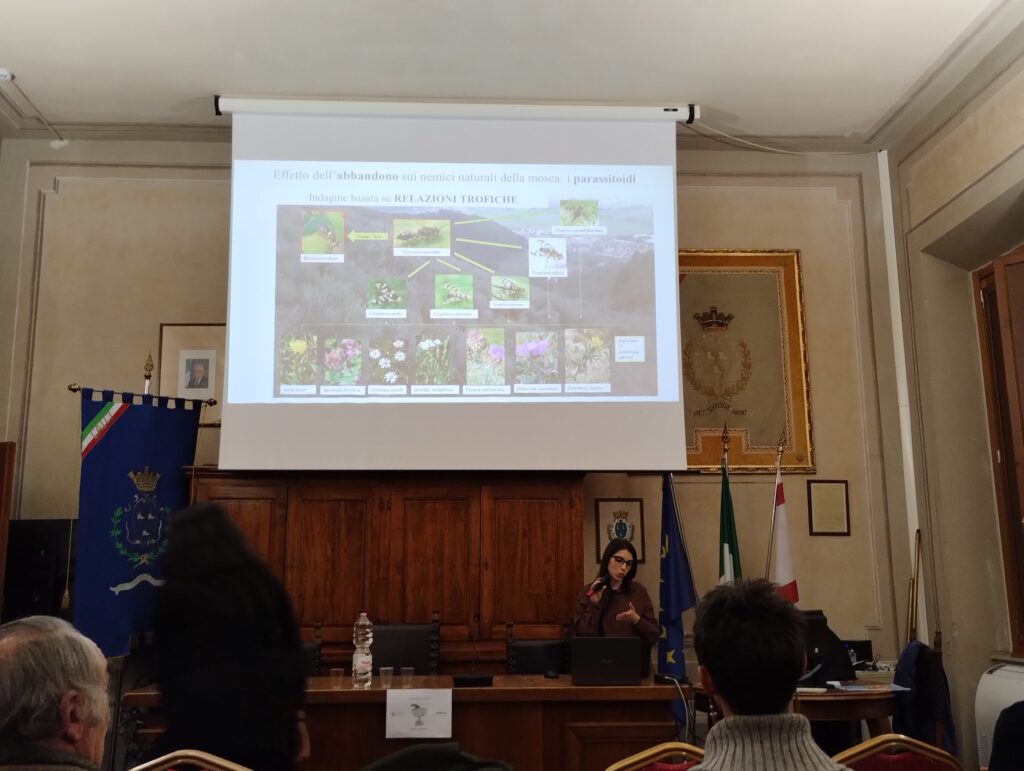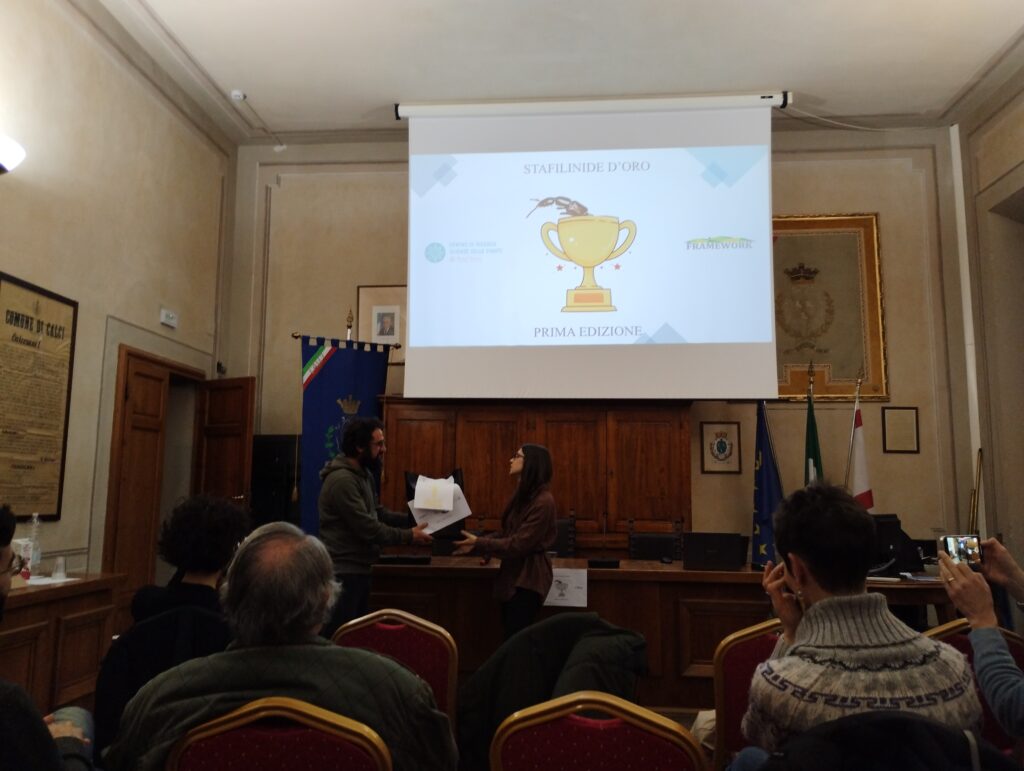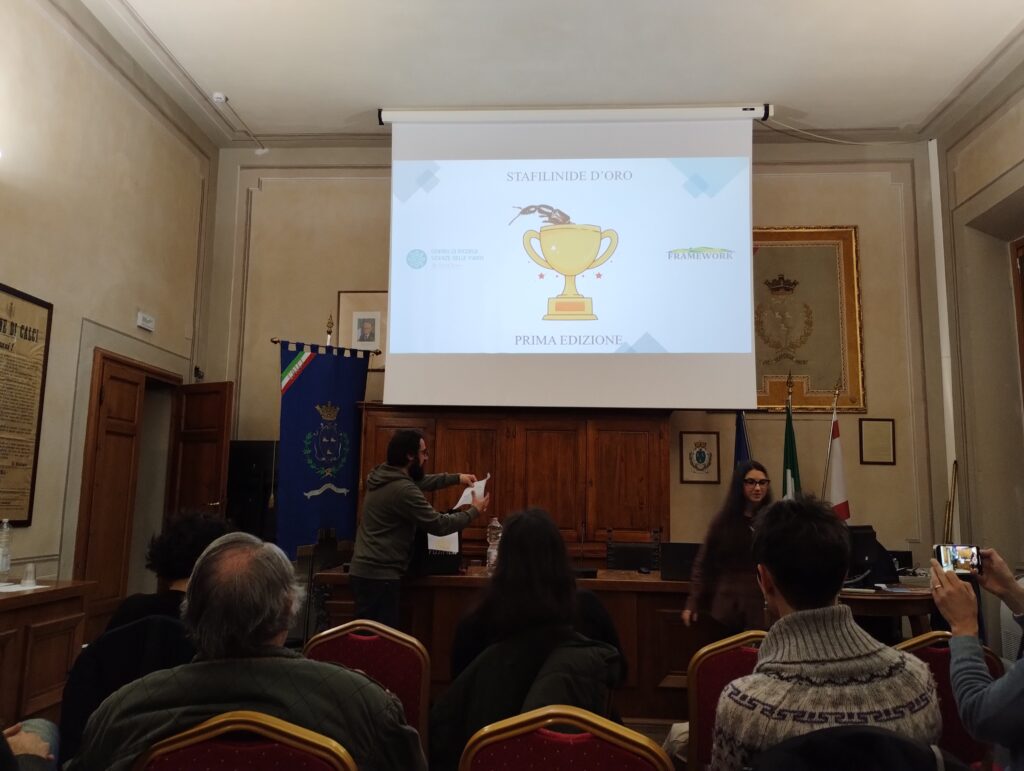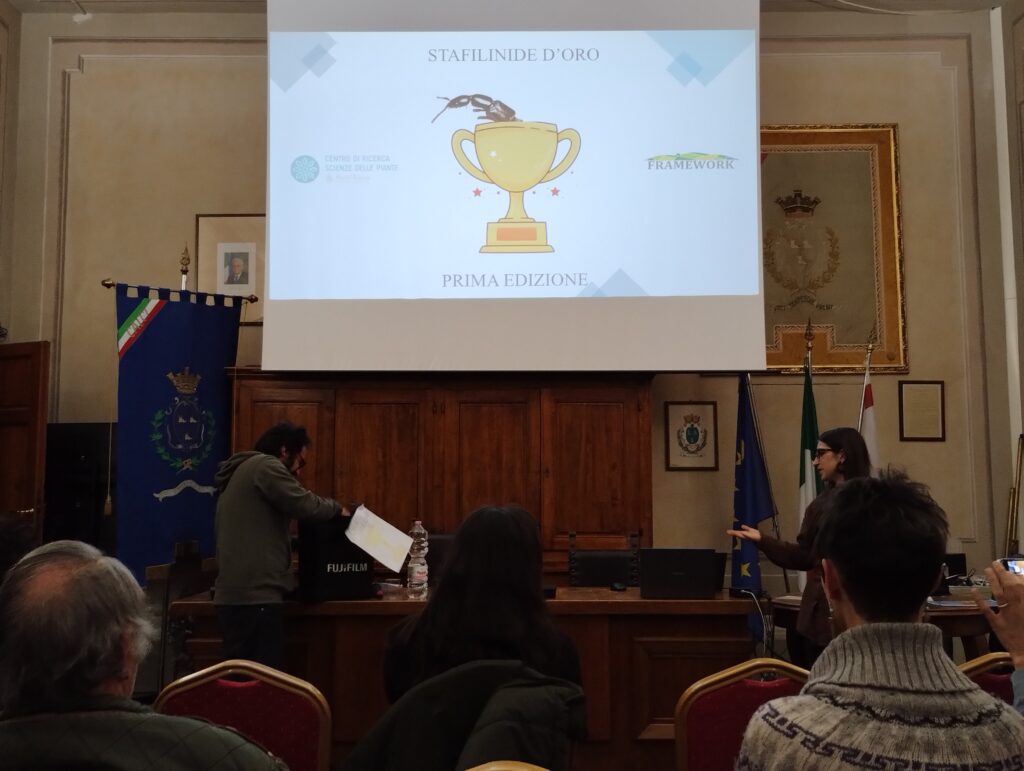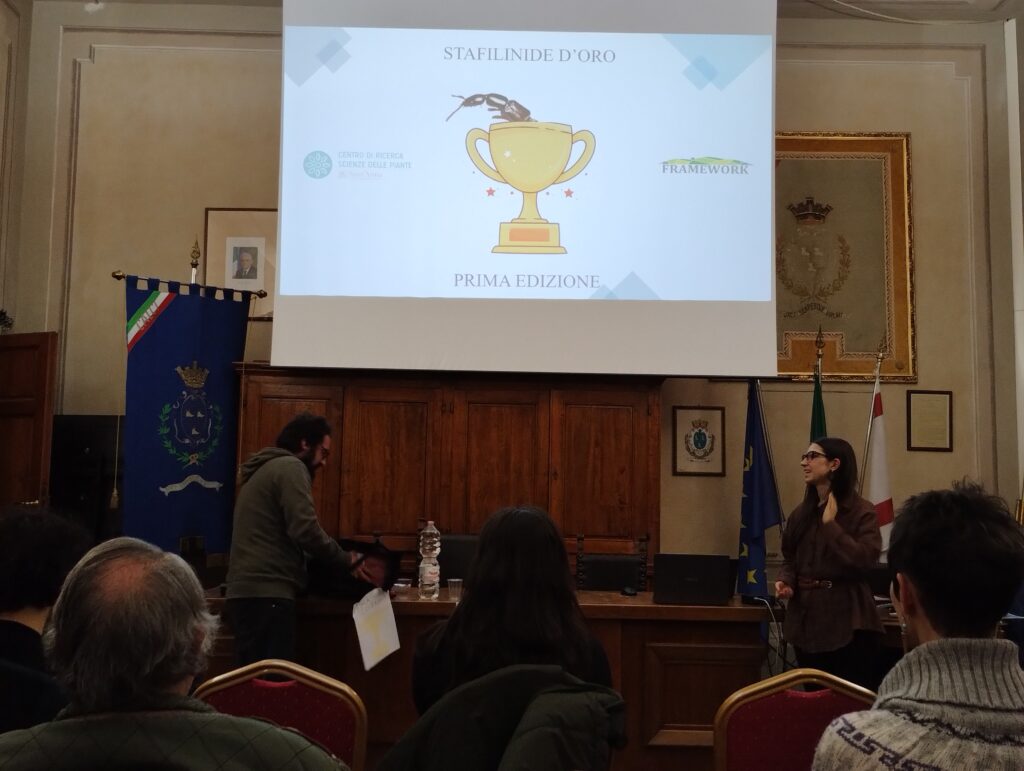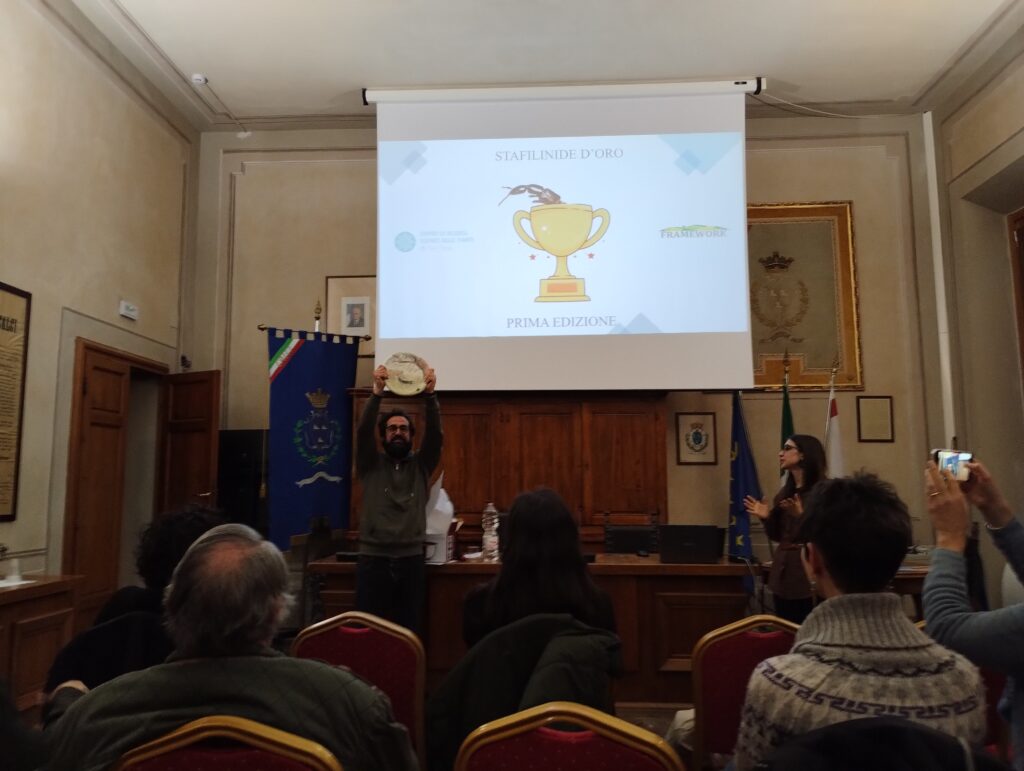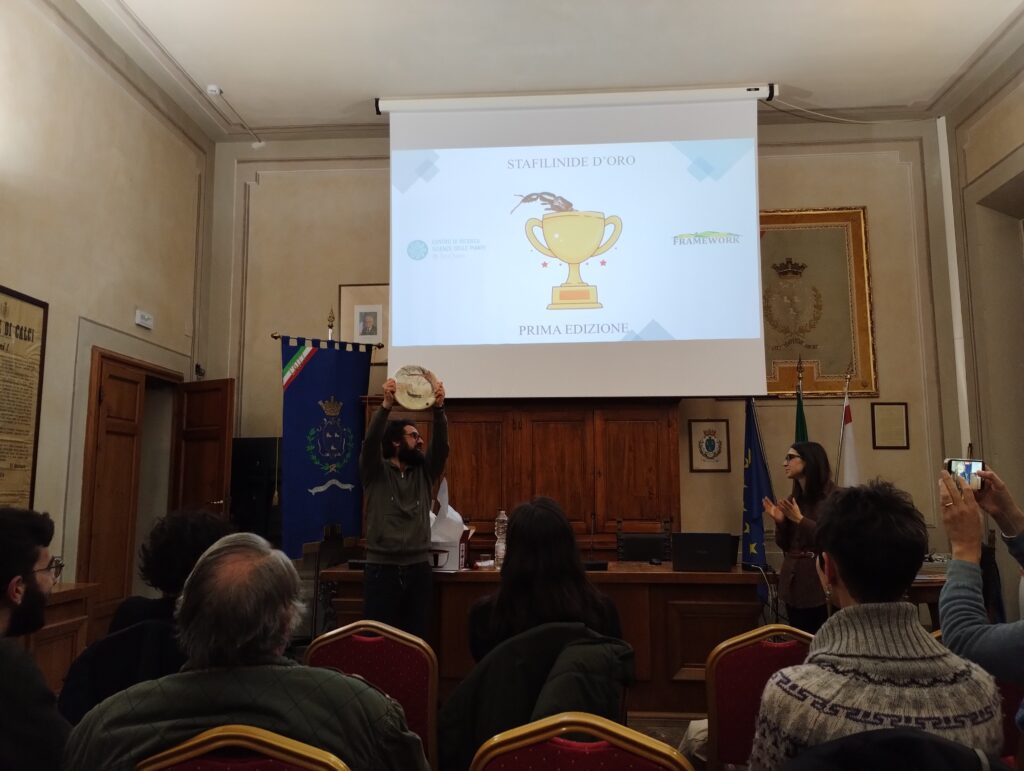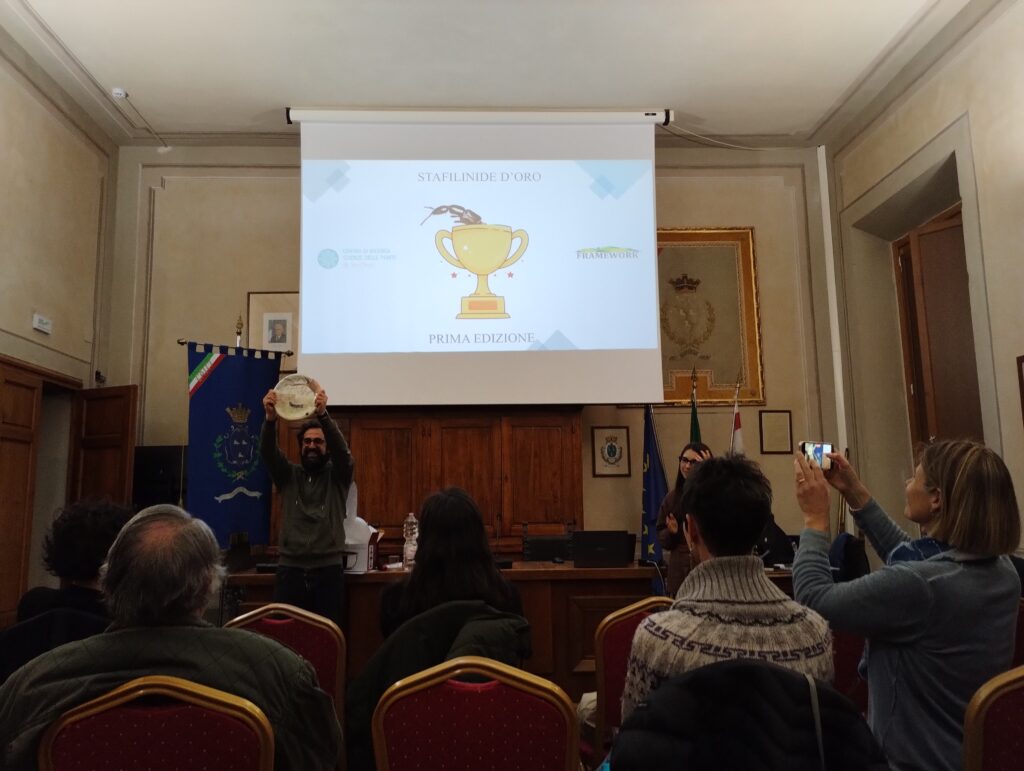The winner is: Davide Milazzo (@gocciaagocciaagrens )che si porta a casa il premio stafilinide d’oro, per maggiore variabilità e frequenza di questi predatori della mosca sui suoi terreni!! Grandi emozioni per la prima edizione di questo premio.

https://recodo.io/news/farmer-cluster/3a126541-f563-85c7-732b-3e7ce983498b
Premio “Lo Stafilinide d’Oro”
Sant’Anna School
Val Graziosa Farmer Cluster
Il 7 marzo scorso, presso la sala consiliare del Comune di Calci, si è tenuta la prima edizione del premio più ambito dagli olivicoltori facenti parte del progetto FRAMEwork… Lo Stafilinide d’Oro!! 😊
Con questo evento ci siamo voluti avvicinare agli olivicoltori per ringraziarli della loro disponibilità e la loro ospitalità. E anche se questo premio non ha valenza nel curriculum vitae del vincitore, crediamo che sia stato un gesto del tutto apprezzato e che il nostro messaggio di gratitudine sia arrivato.
Ma un passo alla volta.
Intanto vi spieghiamo cos’ è questo premio e come nasce l’idea.
Nell’autunno 2022 e 2023, abbiamo svolto delle prove sull’effetto dell’abbandono degli oliveti sul Monte Pisano, indagando sulle comunità di predatori della mosca delle olive che vivono nel suolo, e facendo un focus sugli stafilinidi (Coleoptera: Staphylinidae). A fine prova, il nostro obiettivo era quello di divulgare i risultati agli olivicoltori in maniera leggera ma efficace.
E durante una pausa pranzo, ecco l’idea!
Anche noi ricercatori abbiamo degli hobby, e tra questi c’è chi adora maneggiare l’argilla. Quindi, perché non premiare l’oliveto più bio-diverso e ricco di stafilinidi con un bel piatto d’argilla artigianale?!

Pensate che nei 10 oliveti campionati abbiamo trovato ben 30 specie di stafilinidi! Tra le quali, 20 specie di predatori (alcune di esse con duplice attitudine trofica, ad esempio: attitudine predatoria + saprofagia). Un bellissimo traguardo. Il numero totale degli stafilinidi campionati è stato di 462 nel 2022 e 416 nel 2023, contando che nel 2023 abbiamo avuto un numero maggiore di danni dovuti agli ungulati (ebbene sì, i cinghiali si sono incuriositi alle nostre trappole!).
È stato eletto vincitore l’oliveto con 18 specie diverse di stafilinidi e un numero totale di 119 individui.

Il premio è stato un pretesto per raccontare agli olivicoltori i risultati delle nostre ultime prove, in modo divertente ma veritiero. È stato, inoltre, occasione per socializzare e rafforzare i rapporti olivicoltore-ricercatore.
Importante è stata anche la partecipazione degli agricoltori di altri progetti attivi sul Monte Pisano (IPMworks, ECO-OLIVES). Crediamo, infatti, che le connessioni tra progetti attivi nella stessa area e nello stesso agroecosistema siano una ricchezza da valorizzare per promuovere un’agricoltura ecosostenibile.
Chissà chi sarà il vincitore o la vincitrice della prossima edizione…😊
The complex food web surrounding the olive fruit fly
Sant’Anna School – Val Graziosa Farmer Cluster
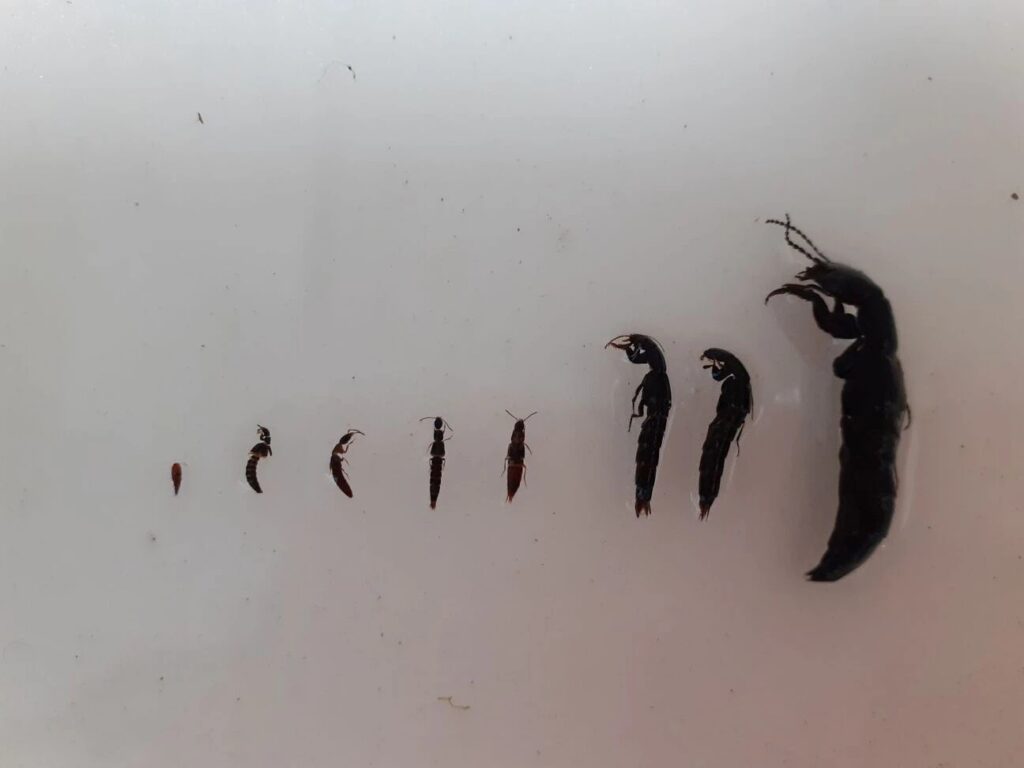
The olive fruit fly (Bactrocera oleae) is the most common pest of the olive plant (Olea europaea) worldwide. In the Mediterranean area the first attack on the new olive fruits is recorded in July, when female flies lay eggs inside the new olive fruits. In the OliValGraziosa Calci Farmer Cluster, the olive fruit fly can do 4-5 generations in a year, threating harvest quantity and quality.
The olive fruit fly females lay eggs inside the new olive fruits, where the metamorphosis starts. Eggs develop into larvae and at the final stage of larval development (called third instar larvae) the larvae escape from the olive fruit and turn into a pupa in the soil. Once in the ground, larvae and pupae are defenseless and very vulnerable to generalist predators. Rove beetles (Staphylinidae) are amongst the most common and dominant group of ground-dwellers, in total numbers and coming in a great diversity of different species. They act as natural pest control when B. oleae dwells in the ground.
Other natural enemies, named parasitoids, perform the same function when the larvae are still inside the olive fruit. In the Monte Pisano area, where the farmer cluster is located, the parasitoid wasps Pnigalio agraules, Eupelmus urozonus and Eurytoma martelii are the main biological control agents of the olive fruit fly larvae when still in the olive fruit. They are tiny wasps, laying their eggs inside the eggs of the olive fruit fly and feeding off the olive fruit fly larvae.
These wasps are polyphagous, feeding on many species of insects, that potential thriving on spontaneous vegetation, such as weeds and other wild plants in the surrounding landscapes making these parasitoid food-webs very complex. For example, the wasp E. martellii, in addition to olive fruit fly, feeds on one other group of fruit flies (Urophora species) which themselves depend on the presence of more than 20 flowering plants (author’s unpublished data).

Better understanding the relationships in the food-webs related to the olive fruit fly is fundamental to promote Conservation Biological Control which can safeguard biodiversity and ecosystem services, as already demonstrated for other agroecosystems.

Alice Caselli
Center of Plant Sciences, Scuola Superiore Sant’Anna, Piazza Martiri della Libertà 33, Pisa, 56127, Italy
References
Albertini et al. (2018) BioControl 63: 227-239
Boccaccio and Petacchi (2009) BioControl 54: 607-616
Duffy et al. (2007) Ecol. Lett. 10(6): 522-538
Gkisakis et al. (2016) Agric. Ecosyst. Environ. 218: 178–189
Petacchi et al. (2015) J. Appl. Entomol. 139: 496-509
Picchi et al. (2017) Biol. Control 108: 9-15


